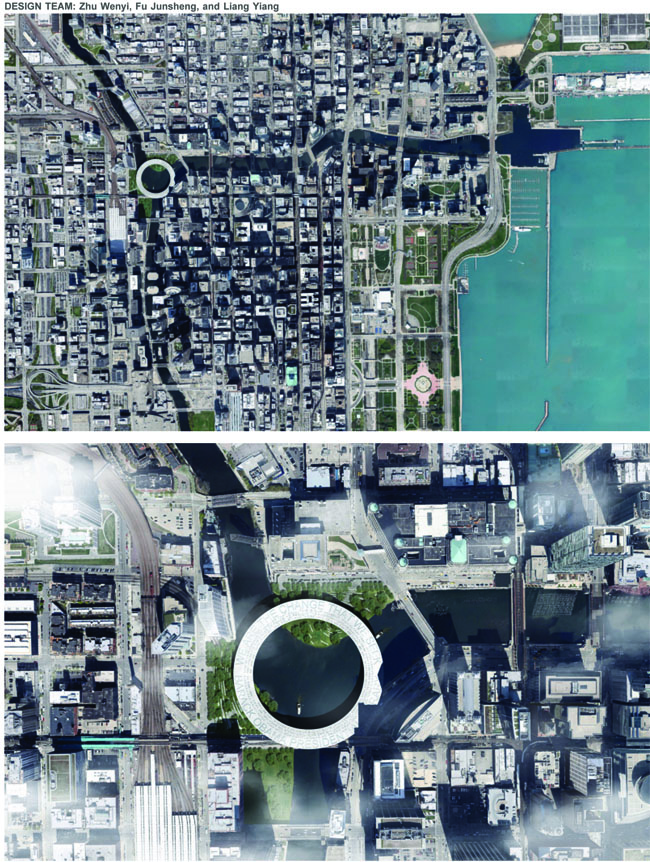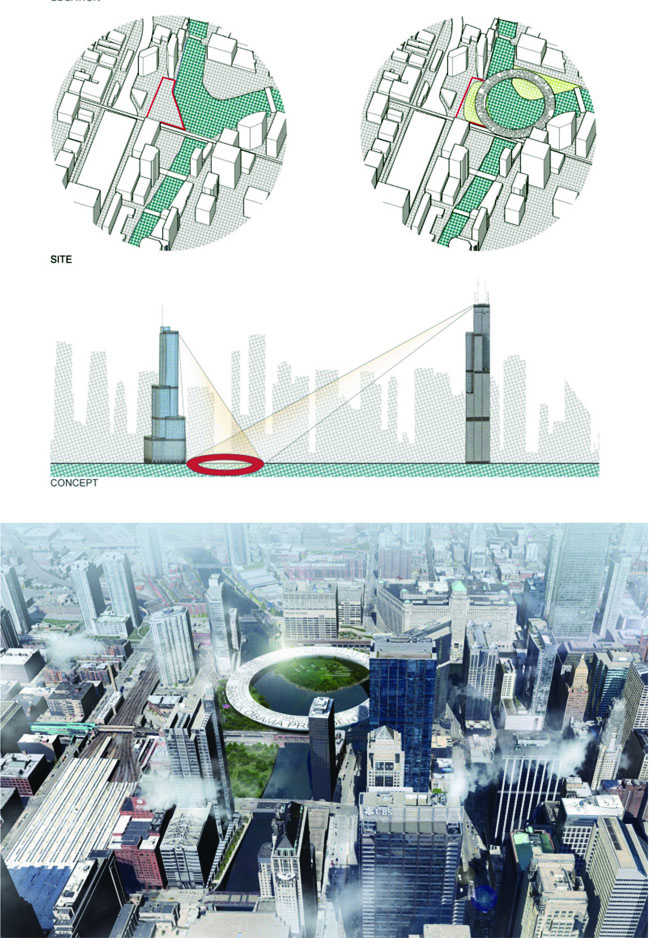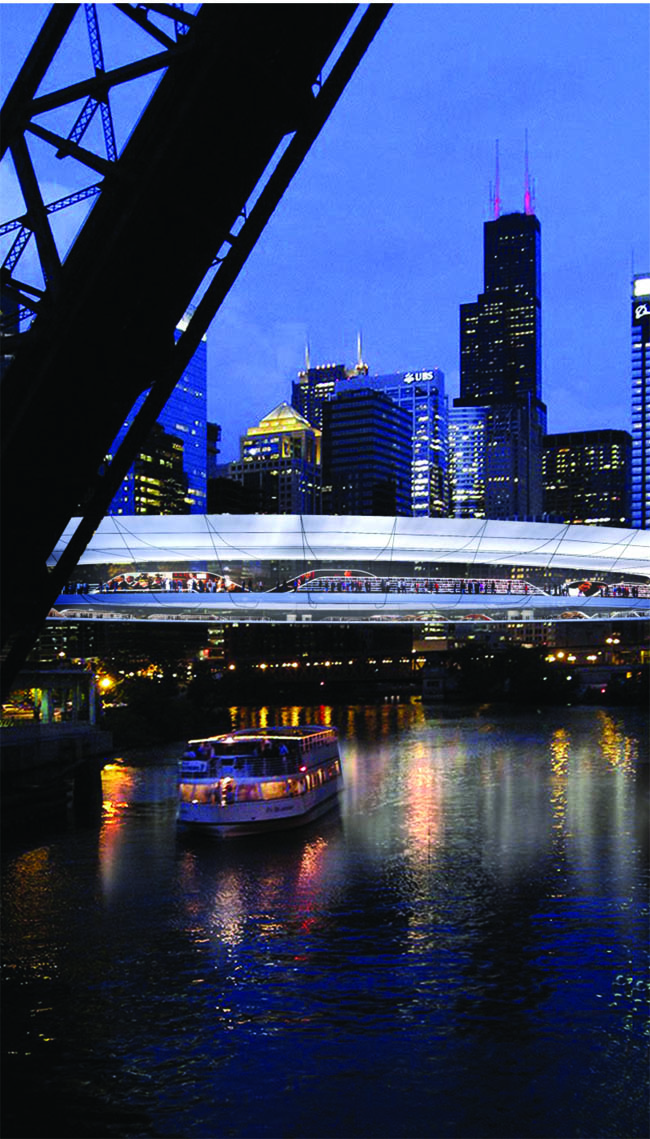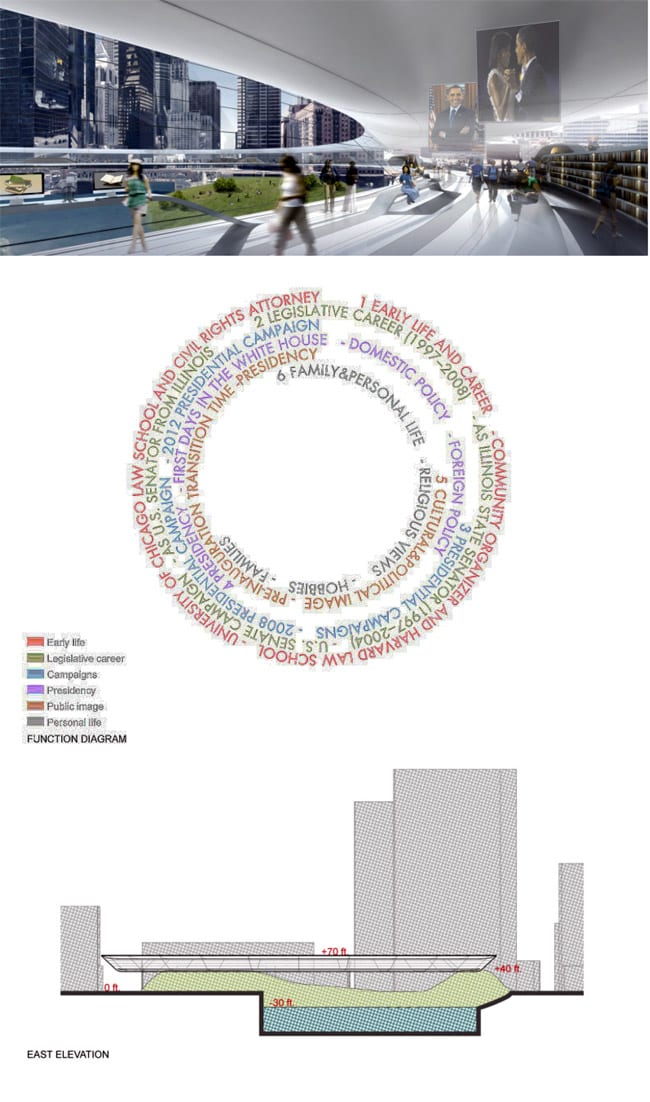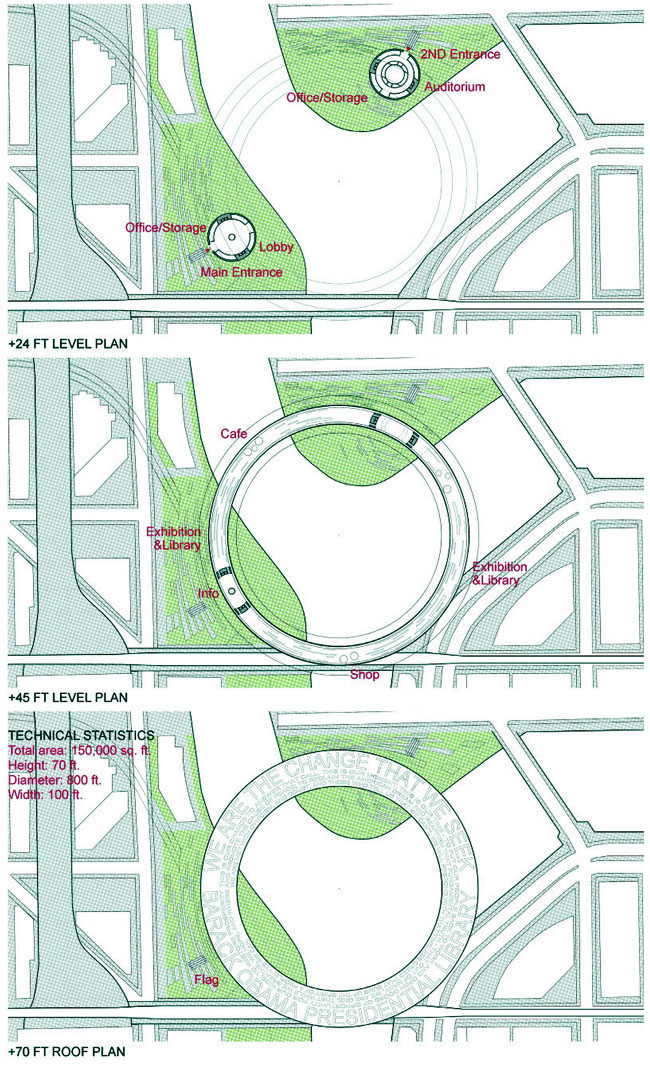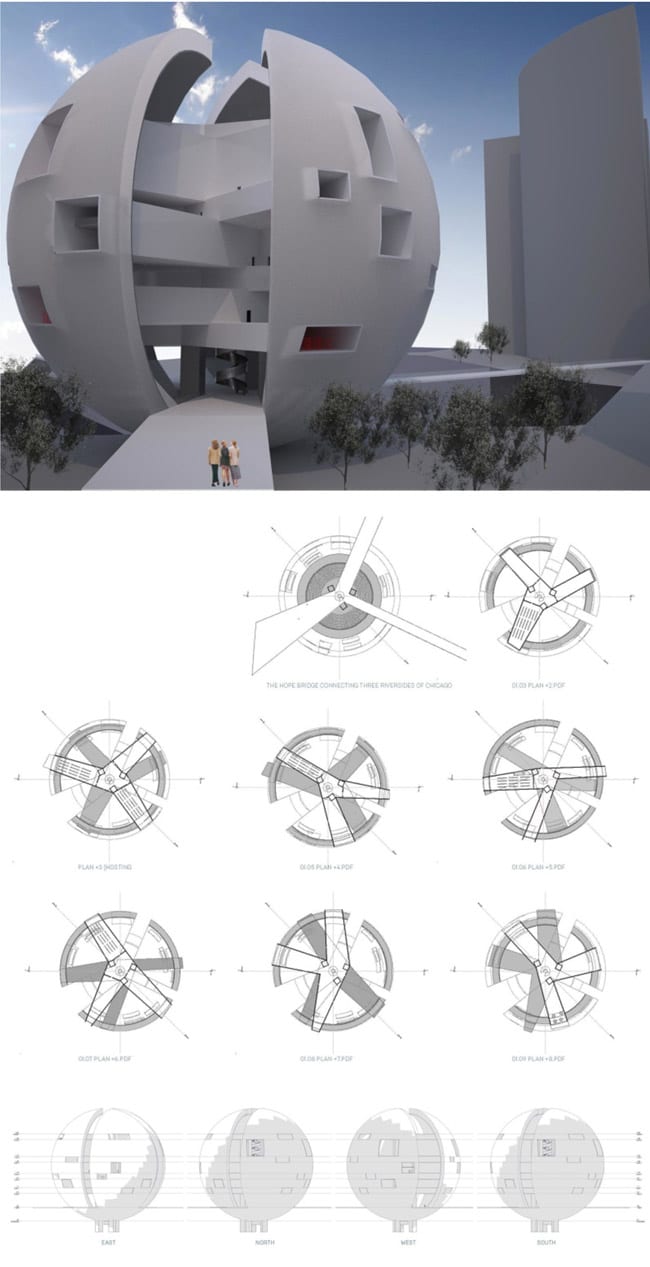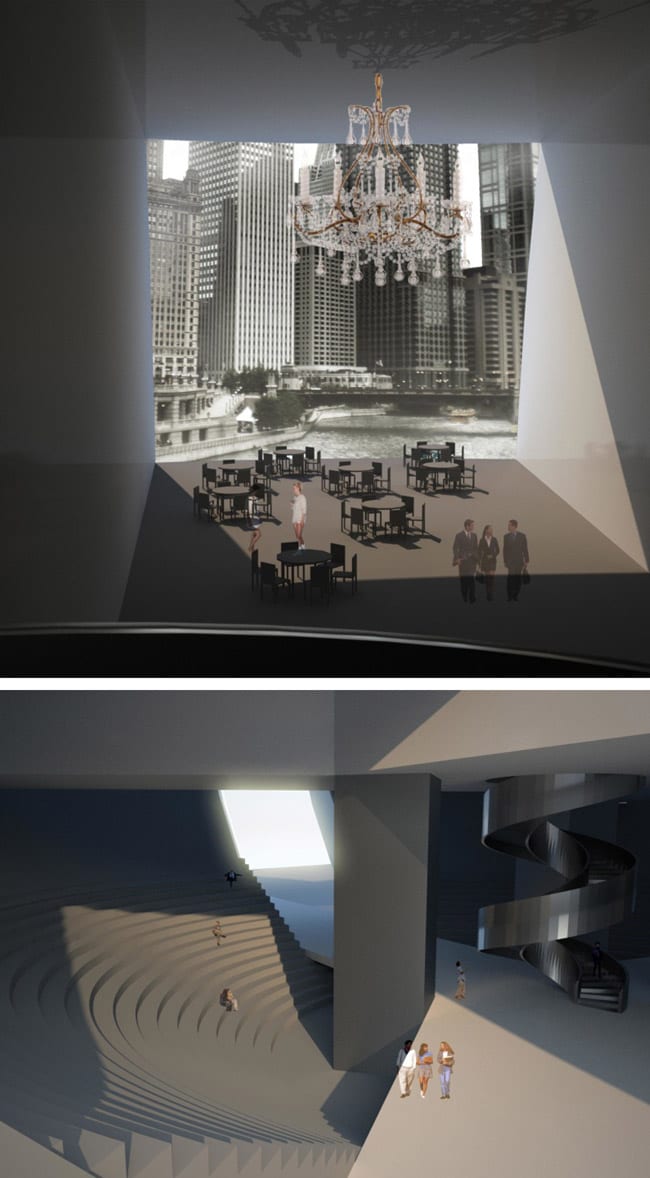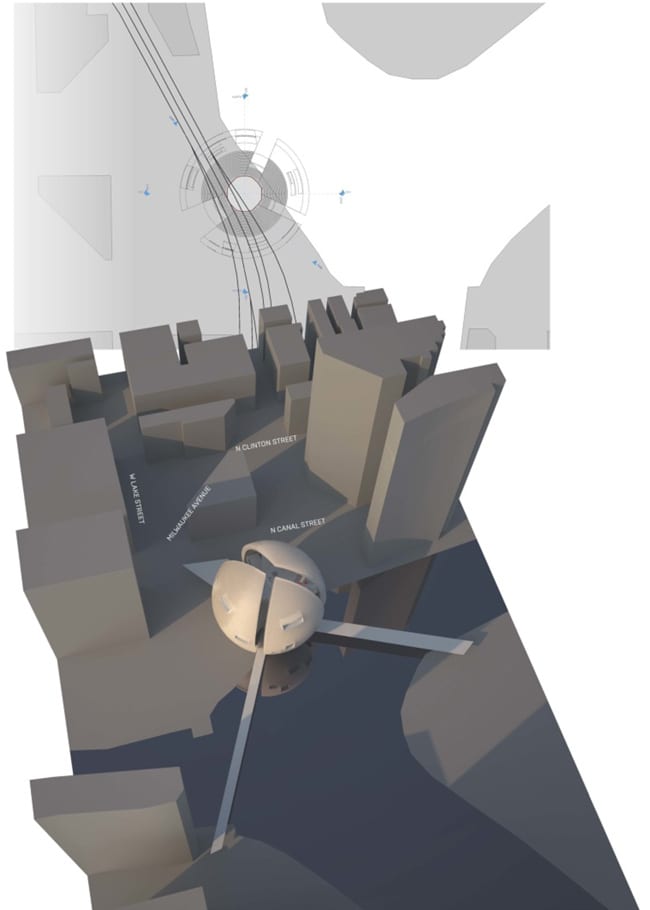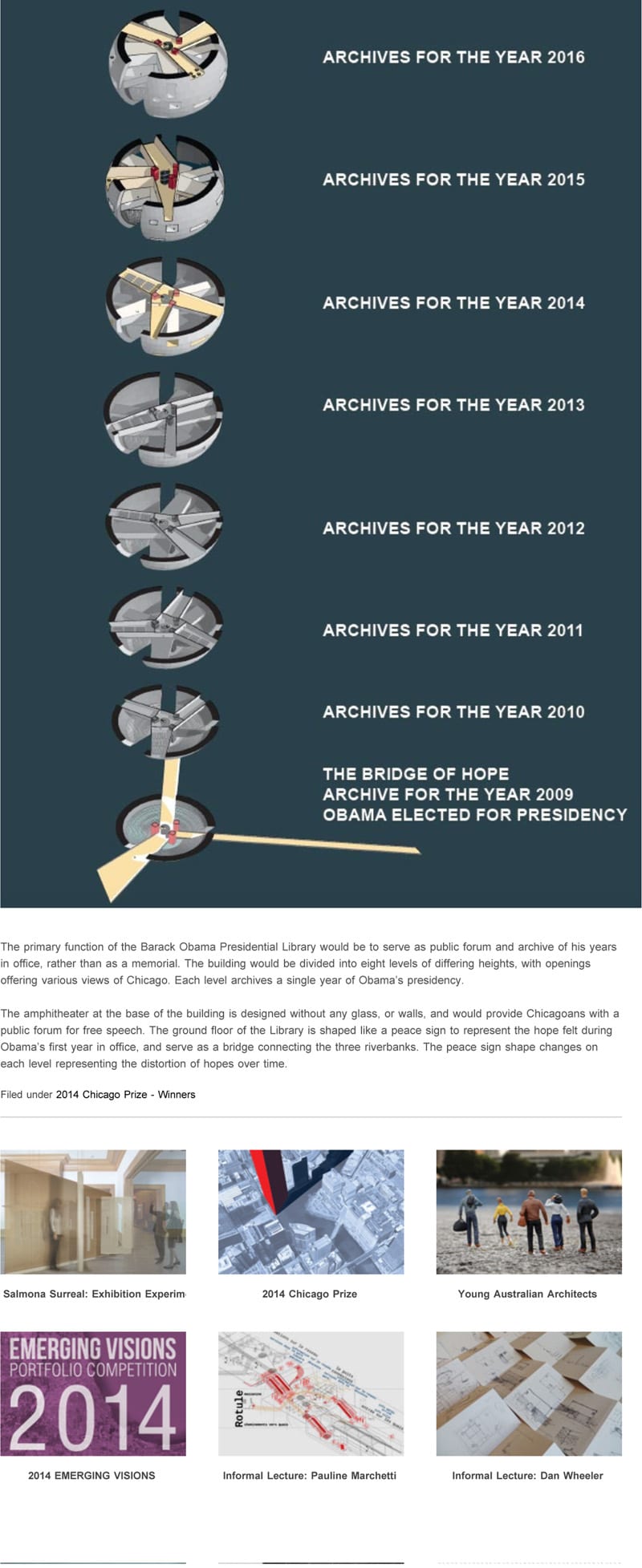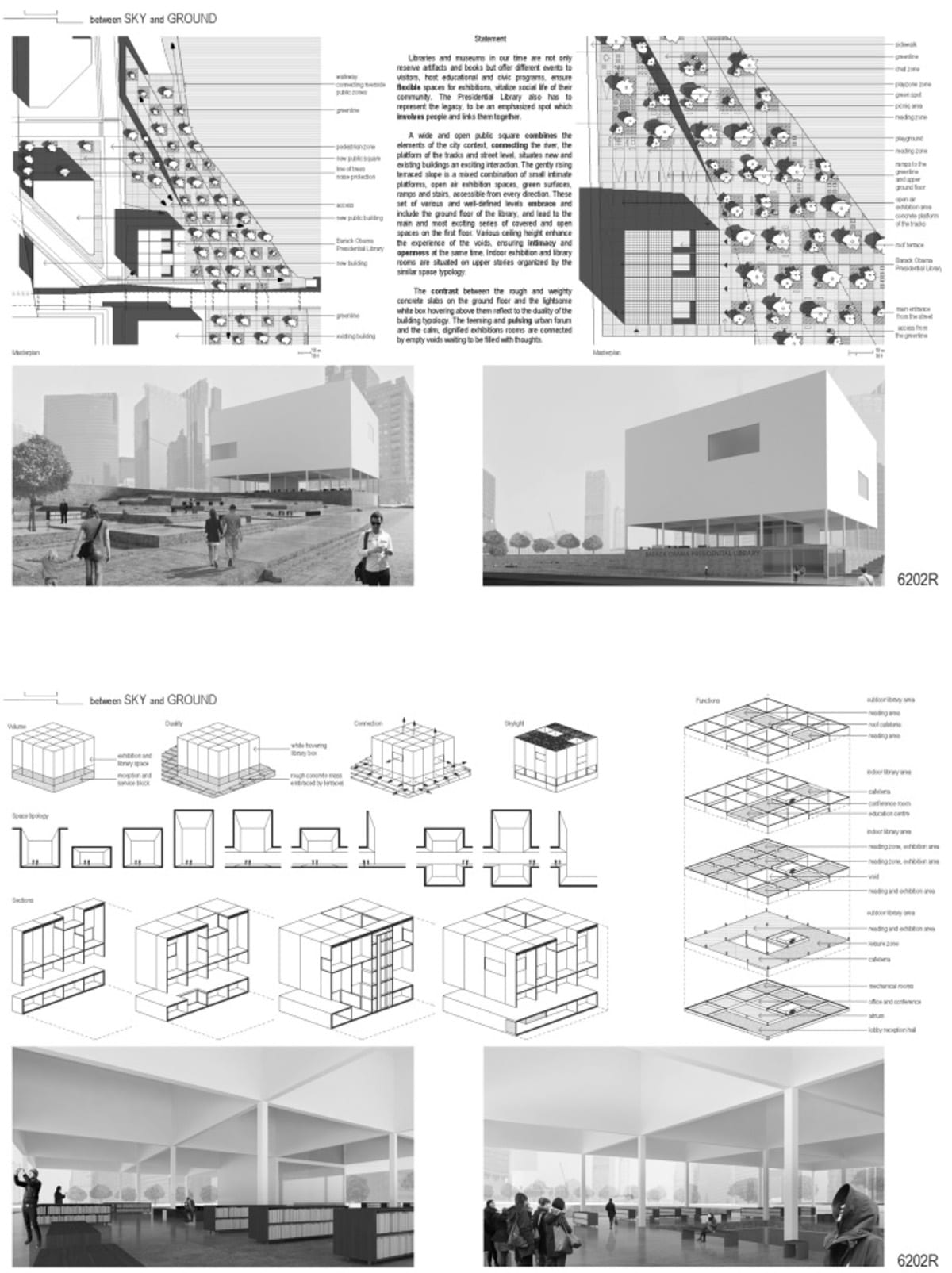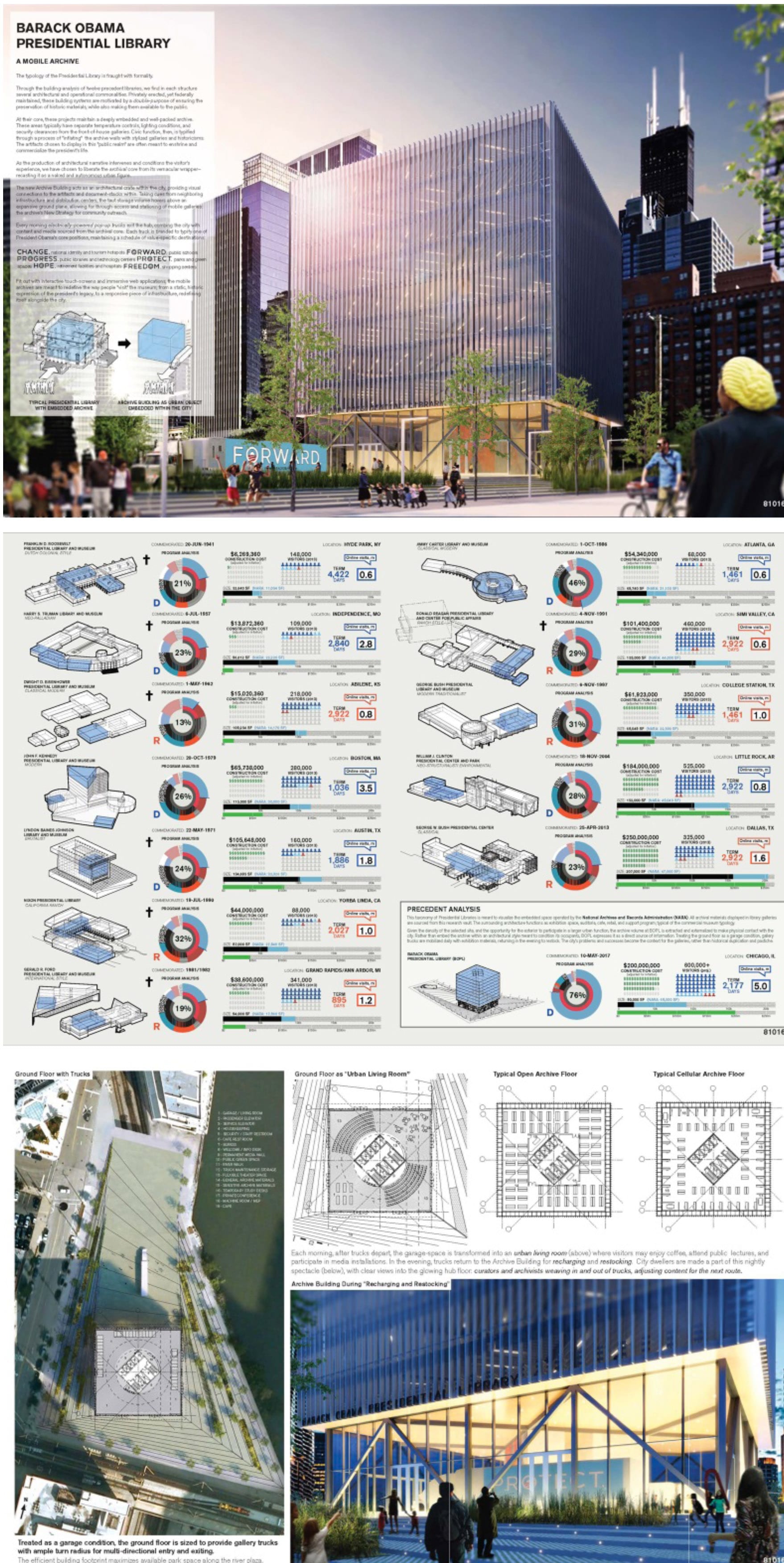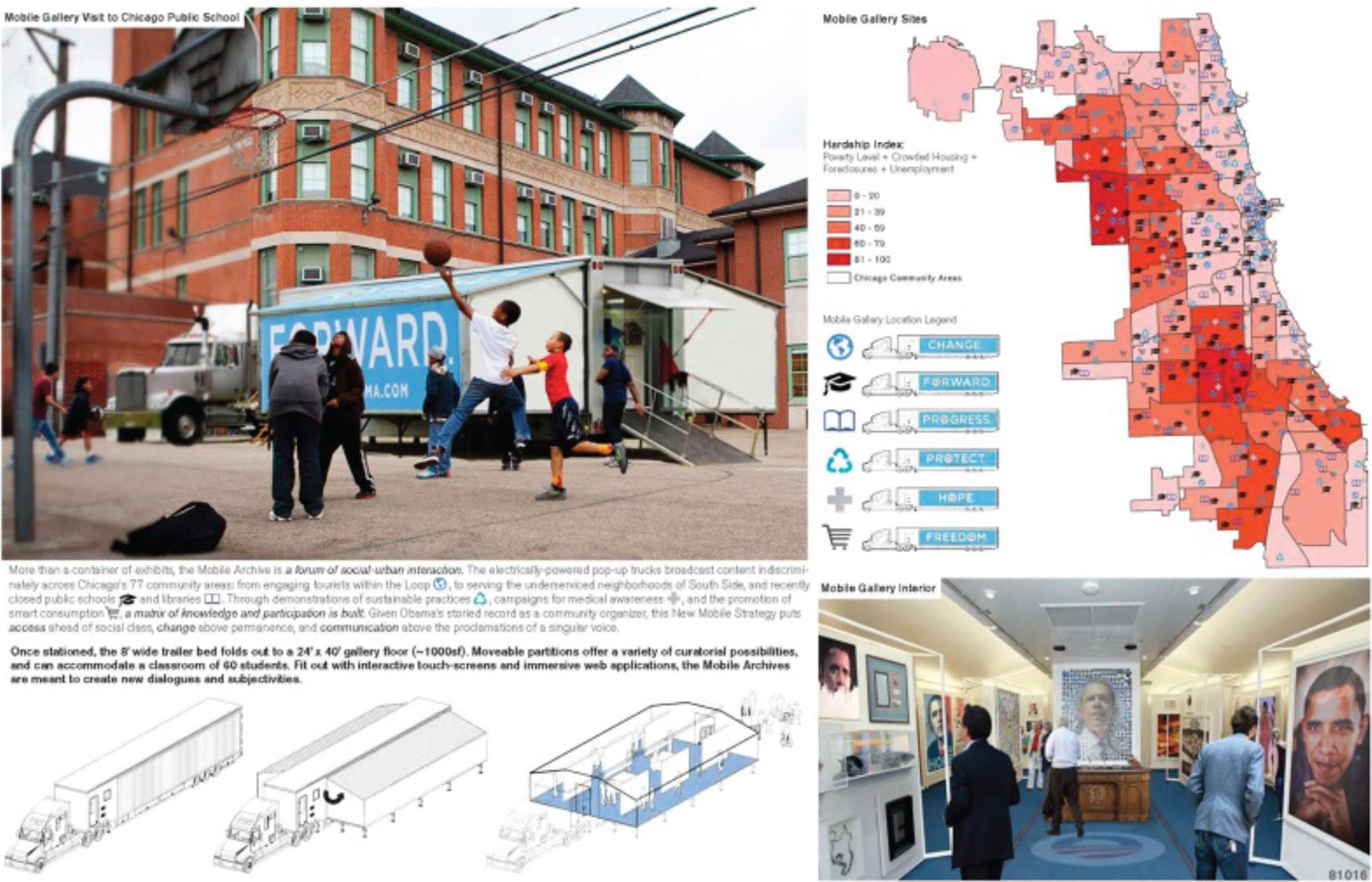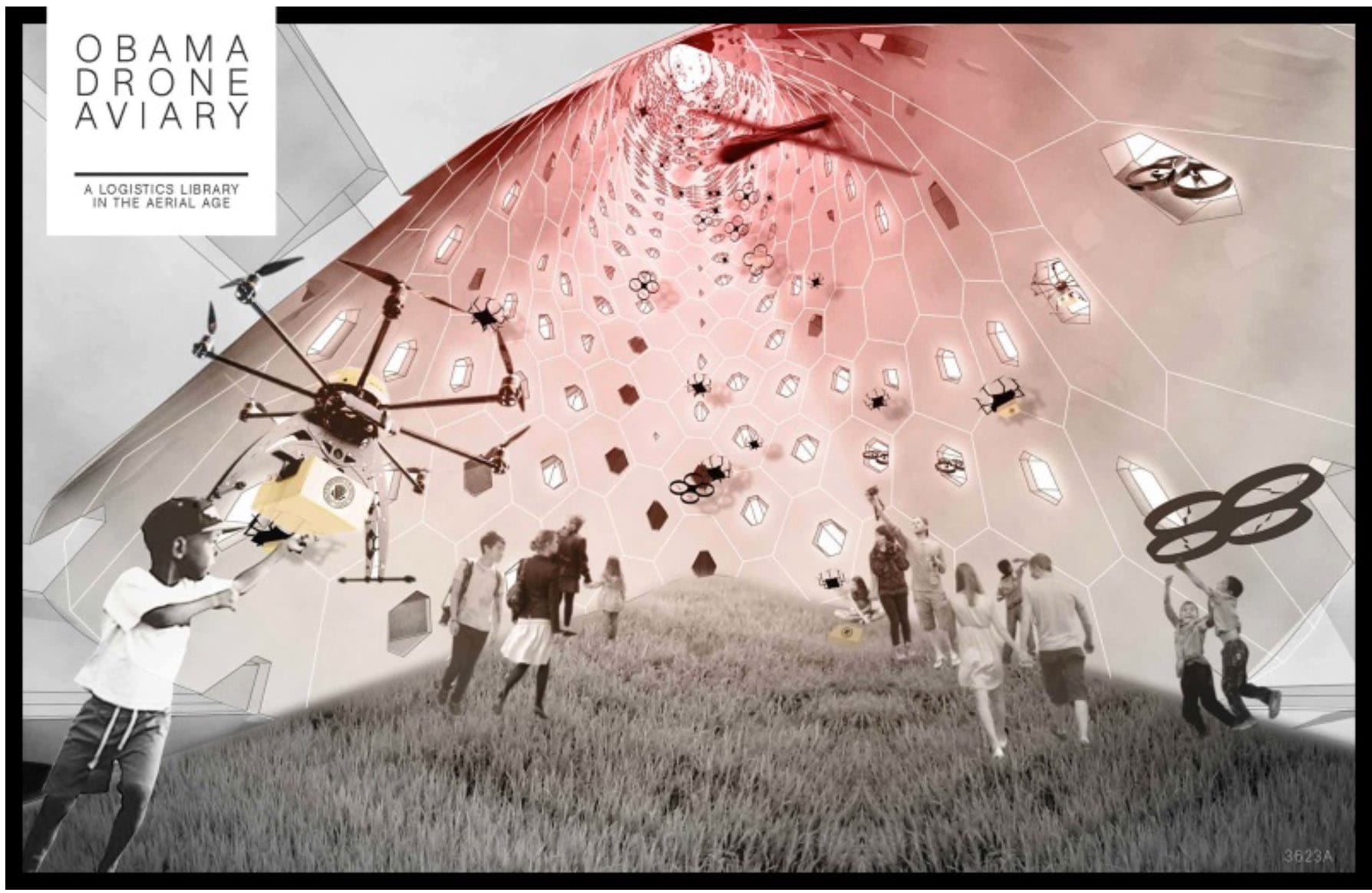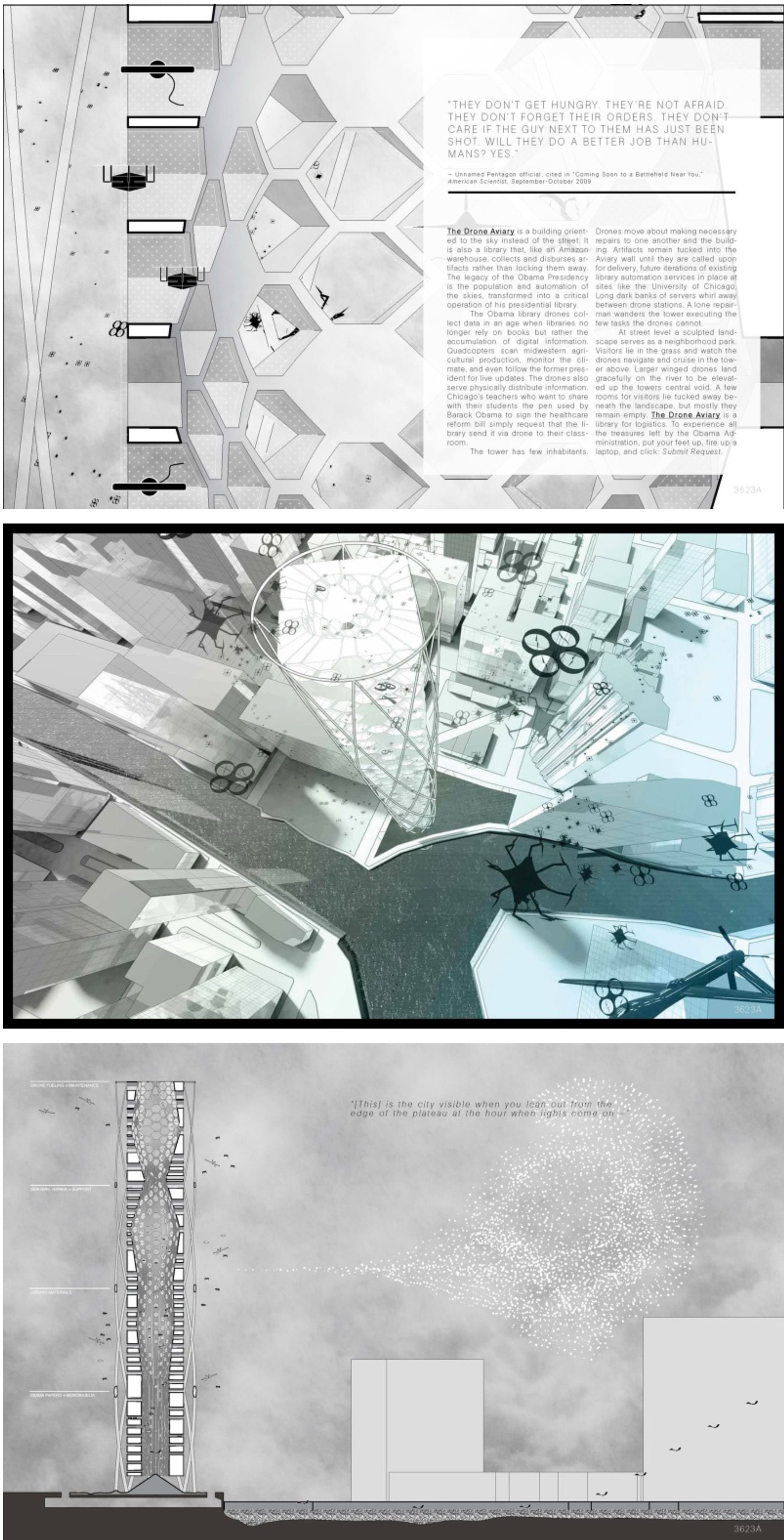
Winning entry by Zhu Wenyi, Fu Junsheng, and Liang Yiang (all images courtesy of the CAC)
During the 2008 presidential campaign, there was the perception that a Barack Obama presidency would usher in an era of new ideas. Years later, there has been some isolated progress, but partisan politics has limited any wiggle room an Obama presidency might have enjoyed. Still, there is a hope for a final decision by this president that could set a precedent for the foreseeable future: a design competition for a presidential library. A successful national competition for such a project could set an example to be emulated many times over at state and municipal levels by a tested democratic process.
Although the site of a Barack Obama Presidential Library has not yet been determined, the list has been whittled down to three possibilities: Chicago, New York and Hawaii. Although Hawaii is the President’s birthplace, and New York would have a large number of visitors, Chicago would seem to be the logical favorite, as it is the place where Obama’s political future began in its meteoric rise, culminating in his election to the nation’s highest office.
A lot has happened in Chicago as both government and the University of Chicago have taken steps to prepare for the city’s bid. A recent article has described aggressive real estate purchases by the University starting in 2008, including an entire block along Martin Luther King Jr. Drive. These could well be attributed to future expansion plans by the University into an adjoining neighborhood, near Washington Park. But many see these real estate acquisitions as part of a strategy to assure the library’s location near the university, where Obama briefly taught in the Law School before going to Washington. In any case, the City also regards the Washington Park and Jackson Park locations on the South Side as the most logical sites for the library.
With the prospect of a presidential library in Chicago, the Chicago Architecture Club (CAC) could not resist staging an ideas competition with the design of an Obama library as the design challenge. As the 2014 Chicago Architecture Prize, this has become an annual event for the CAC, and this time they picked an obvious subject as a winner. Aside from a designated site on the Chicago River, the program was flexible, and participants were asked to fill in the blanks themselves. Although the prize money was relatively modest, the subject matter had to be tantalizing for potential participants. The jury was local, consisting of architects from several of the city’s major firms:
• Andy Metter (Epstein)
• Brian Lee (SOM)
• Dan Wheeler (Wheeler Kearns Architects)
• Elva Rubio (Rubio Studio)
• Geoffrey Goldberg (G. Goldberg + Associates)
• Stanley Tigerman (Tigerman McCurry Architects)
ÂÂÂÂÂÂÂ
The results of the competition revealed that the competition was highly successful, in that it elicited a range of ideas, which were not only at the highest creative level, but quite doable.
The two winning entries were by:
• Zhu Wenyi, Fu Junsheng, and Liang Yiang, Beijing, China
• Aras Burak Sen, Los Angeles/UAE (OMA)
Honorable Mentions
Dániel Palotai, Budapest, Hungary
Drew Cowdrey and Trey Kirk, Boston (Harvard GSD)
Ann Lui and Craig Reschke, Boston (Harvard GSD)
One might argue that the CAC should have picked a site on the South Side, where the library may eventually be located. However, the chosen site was undoubtedly a greater challenge than that in a park setting, partially because of its high-density location. Granted, such a site in Chicago’s downtown would only add marginally to the economic development of that neighborhood, whereas a location on the South Side would be a game changer for that area and represent a high-profile neighbor for the University of Chicago. At this writing, the Chicago aldermen have just approved a resolution, decreeing availability of both Washington Park and Jackson Park as potential sites for the Barack Obama Presidential Library.
ÂÂÂÂÂÂÂÂÂ
Winning entry (shared) by Zhu Wenyi, Fu Junsheng, and Liang Yiang, Beijing, China:

Jury Comments:
“The Barack Obama Presidential Library is designed to reflect President Obama’s charisma, while maintaining and
showcasing the identity of the urban grid and river system. The designers fully utilized the roof of the Library as a “fifth
elevation,” which would be visible from the surrounding skyscrapers.
The Library would have exhibitions divided into six sections including: early life and career, legislative career, presidential
campaigns, presidency, public image, family and personal life. Visitors would experience each section by walking along,
and between six parallel tracks allowing them to examine different aspects of the president’s life at one time.”
ÂÂÂÂÂÂÂÂ
Winning Entry (shared) by Aras Burak Sen, Los Angeles/UAE (OMA):
“The primary function of the Barack Obama Presidential Library would be to serve as public forum and archive of his years in office, rather than as a memorial. The building would be divided into eight levels of differing heights, with openings offering various views of Chicago. Each level archives a single year of Obama’s presidency.
The amphitheater at the base of the building is designed without any glass, or walls, and would provide Chicagoans with a public forum for free speech. The ground floor of the Library is shaped like a peace sign to represent the hope felt during Obama’s first year in office, and serve as a bridge connecting the three riverbanks. The peace sign shape changes on each level representing the distortion of hopes over time.”
ÂÂÂÂÂÂÂÂ
Honorable Mention by Dániel Palotai, Budapest, Hungary
“Libraries and museums no longer simply store artifacts and books—they host educational and civic programs, provide flexible spaces for exhibitions, and help revitalize communities. Presidential Libraries have the added challenge of representing a President’s legacy.
An open public square could connect the city, river, train tracks, and street level. This terraced slope would be dotted with small private platforms, open-air exhibition spaces, ramps, and stairs, which make it accessible from all directions. The ground level and interior exhibition and library space would be organized along the same design principals, creating a sense of intimacy and openness at the same time.”
ÂÂÂÂÂÂÂ
Honorable Mention by Drew Cowdrey and Trey Kirk, Boston (Harvard GSD):
“The typology of the Presidential Library is fraught with formality. Analysis of the other Presidential Libraries shows architectural and operational commonalities. These Libraries are motivated by a double-purpose: ensuring the preservation of historic materials, while making them available to the public.
The new Archive Building would act as a storage center, and serve as a hub for a system of mobile galleries. A fleet of trucks would be outfitted with touch-screens filled with content from the archival core. Each morning the trucks would leave the hub, and head towards stations throughout the city. These Mobile Archives are meant to redefine the way people “visit” the museum: from a static, historic expression of the president’s legacy to a responsive piece of infrastructure that redefines itself alongside the city.
”
ÂÂÂÂÂÂÂ
ÂÂÂÂÂÂ
Honorable Mention by Ann Lui and Craig Reschke, Boston (Harvard GSD):
“The Drone Aviary doesn’t lock artifacts away—it collects and disburses them. President Obama’s legacy, the population and automation of the skies, would be the critical operation of his Presidential Library.
The Obama Library drones both collect and distribute information. They can scan agricultural production, monitor the climate, and follow former presidents for live updates. Teachers can also borrow the pen used by Barack Obama to sign the healthcare bill by requesting that the library send it, via drone, to their classroom.
Artifacts remain tucked into the Aviary wall until called upon for delivery. At street level a sculpted landscape serves as a neighborhood park for visitors who watch the drones in the tower above.”
ÂÂÂÂÂÂÂ
Â



























